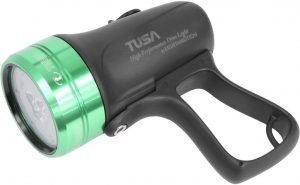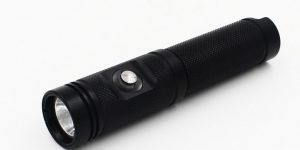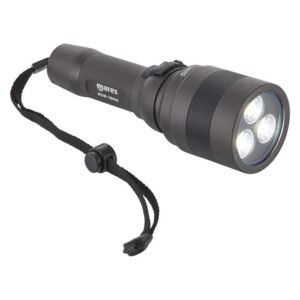Choosing the right dive light
To restore their magnificent colors to corals and fish, or to orientate yourself during night dives or in caves or wrecks, you must find a way to illuminate your surroundings. Whether day or night, a suitable dive light is always helpful.
There are many models and a wide range of prices available on the market and, but every lamp has its own characteristics and may not be suitable for all environments. You must therefore clearly define your needs before you can choose the most suitable model.

Choosing the Right Dive Light for Enhanced Underwater Exploration
When it comes to scuba diving, proper illumination is not just a luxury; it’s a necessity. Whether you’re embarking on a night dive, exploring caves, or delving into wrecks, having the right dive light is crucial to ensure your safety, enhance your experience, and protect the delicate underwater ecosystem. In this comprehensive guide, we will delve into the intricacies of selecting the perfect dive light, catering to your specific diving needs and preferences.
Understanding Your Diving Needs
Before diving into the world of dive lights, it’s essential to have a clear understanding of the type of diving you’ll be undertaking. Each diving scenario demands specific lighting requirements, and choosing the right dive light will greatly impact your ability to fully immerse yourself in the underwater world. Here’s a breakdown of the different types of dives and their corresponding lighting needs:

1. Dives in Clear Waters and Daytime:
– For daytime dives in clear waters, a compact dive light with a narrow beam is ideal. This type of dive light allows you to explore crevices, rocks, and small spaces effectively.
– Portability is key, as you’ll want a light that can be easily stowed in your jacket pocket when not in use.
2. Dives in Murky Waters:
– Murky waters require a more powerful dive light with a narrow beam to cut through particles without causing excessive backlighting, which can impair visibility.
– Maintaining a clear view without being blinded by your own light is essential.
3. Night Dives:
– Night dives call for a dive light with a wider beam to illuminate a larger area, providing a panoramic view of your surroundings.
– Constantly moving the dive light is crucial for effective exploration in low-light conditions.
4. Technical Dives:

– Technical dives necessitate a different type of dive light, typically featuring a very bright and narrow beam.
– These lights often consist of two parts: the lamp and a canister containing the battery, connected by a cable.
– The flexibility and extended battery life of these lights are essential for more challenging dives.
5. Photography or Filming:
– If underwater photography or filming is your passion, a dive light with a wide beam is a must to avoid hotspots in your visuals.
– The light should be powerful enough to provide ample illumination for your photography or filming needs, making an angle of 120 degrees highly recommended.
Based on your diving preferences, it appears that you’ll primarily be exploring clear waters, both during the day and at night. Additionally, your interest in photography indicates the need for a dive light with a wide beam angle. Therefore, we recommend selecting a dive light that is compact for easy portability, features a narrow beam for night dives, and offers a wide beam for clear water dives and photography.
Choosing the Right Technology

When it comes to selecting the technology for your dive light, LED lights stand out as the top choice. LED lights offer several advantages that make them the preferred option for modern divers:
– Energy Efficiency: LED lights are incredibly energy-efficient, ensuring prolonged battery life and minimizing the need for frequent replacements.
– Power Output: LED lights provide ample illumination, making them suitable for various diving conditions.
– Durability: LED lights are known for their durability and resistance to shock and impact, ensuring reliability in challenging underwater environments.
In contrast, filament bulbs and HID (High-Intensity Discharge) lights are less commonly used in modern dive lights and are typically reserved for specialized applications. Therefore, for optimal performance and reliability, we strongly recommend opting for LED technology for your dive light.
Choosing the Right Batteries
Your choice of batteries for your dive light can significantly impact your diving experience. There are three primary options to consider:
1. Rechargeable Batteries:
– Rechargeable batteries are an excellent choice for frequent scuba divers, offering long-term cost savings and environmental benefits.
– They can be easily recharged between dives, provided you have access to a power source.
– However, it’s important to note that rechargeable batteries may discharge over time when not in use, so planning ahead is essential.
2. Traditional Batteries:
– Traditional batteries, such as alkaline batteries, are readily available worldwide and budget-friendly.
– They are a reliable option for powering your dive light but tend to have a shorter lifespan compared to rechargeable batteries.
– Traditional batteries are a practical choice for divers on a budget or those exploring remote areas without access to power sources.
3. Lithium Batteries:

– Lithium batteries offer several advantages, including longer battery life and superior overall performance.
– However, they may be less accessible in remote dive locations.
– If performance is your top priority and you’re willing to put in the effort to find them, lithium batteries can be an excellent choice.
In conclusion, the choice of the right dive light is a highly individualized decision, contingent upon your specific diving needs and preferences. Whether you require a secondary torch for clear water dives, a primary torch for murky waters or night dives, a canister light for technical dives, or a versatile photo and video lamp, there’s a suitable dive light for every scenario. LED lights, with their energy efficiency, extended battery life, durability, and cost-effectiveness, are the recommended technology.
When it comes to batteries, opt for rechargeable batteries if you dive frequently and have access to power sources, traditional batteries if you’re on a budget or diving remotely, or lithium batteries for superior performance.
In conclusion, choosing the right dive light is a critical aspect of enhancing your diving experience and effectively exploring the underwater world. If you have any further questions or need additional information, please don’t hesitate to reach out to us. We’re here to assist you in making the most of your future dives.
Happy bubbles!


